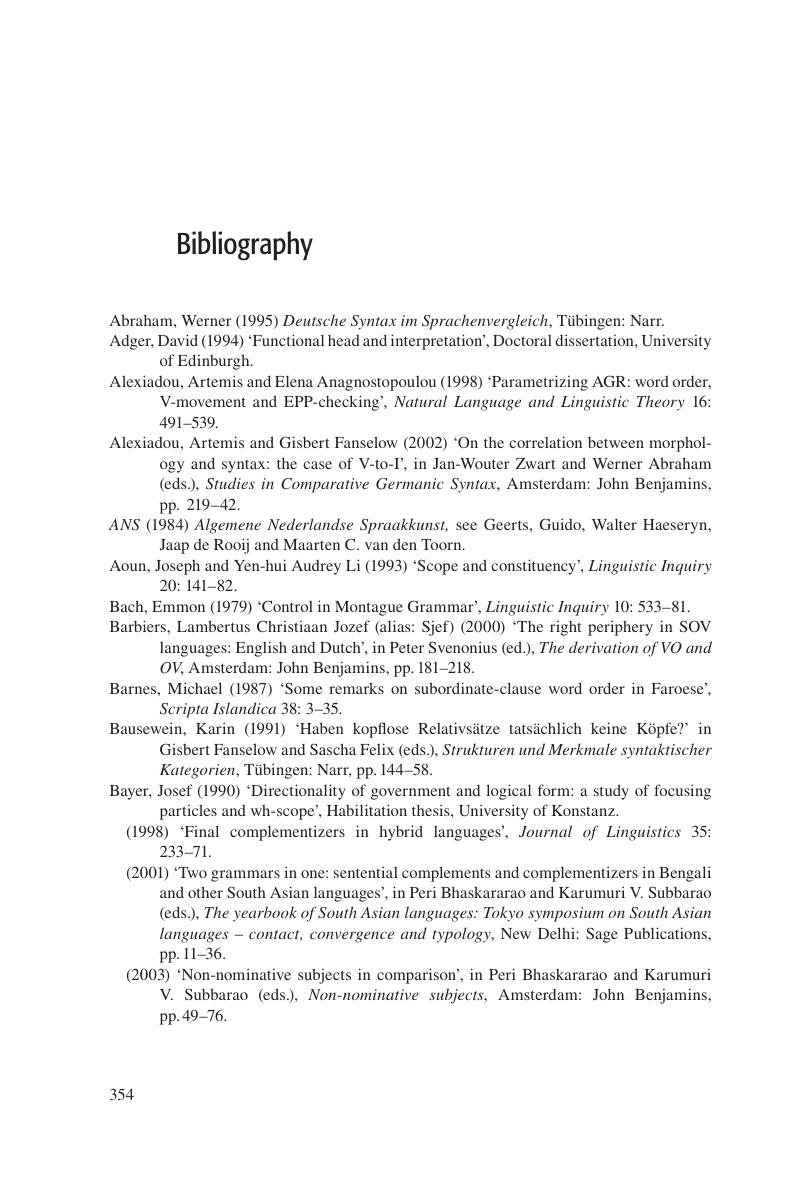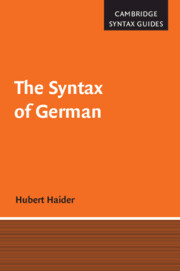Book contents
- Frontmatter
- Contents
- List of tables and figure
- Foreword
- Acknowledgements
- List of abbreviations
- 1 A comparative survey: German – V2 and partially OV
- 2 The functional architecture of a German clause: facts and controversies
- 3 Targeting the clause-initial position: German wh-constructions
- 4 Targeting left: clause-internal word order and word order variation
- 5 Targeting the right edge: extraposition
- 6 Case: a nominative–accusative language with a four-way case paradigm
- 7 Non-finite verbs and their constructions
- Bibliography
- Index
- References
Bibliography
Published online by Cambridge University Press: 05 June 2012
- Frontmatter
- Contents
- List of tables and figure
- Foreword
- Acknowledgements
- List of abbreviations
- 1 A comparative survey: German – V2 and partially OV
- 2 The functional architecture of a German clause: facts and controversies
- 3 Targeting the clause-initial position: German wh-constructions
- 4 Targeting left: clause-internal word order and word order variation
- 5 Targeting the right edge: extraposition
- 6 Case: a nominative–accusative language with a four-way case paradigm
- 7 Non-finite verbs and their constructions
- Bibliography
- Index
- References
Summary

- Type
- Chapter
- Information
- The Syntax of German , pp. 354 - 367Publisher: Cambridge University PressPrint publication year: 2010



